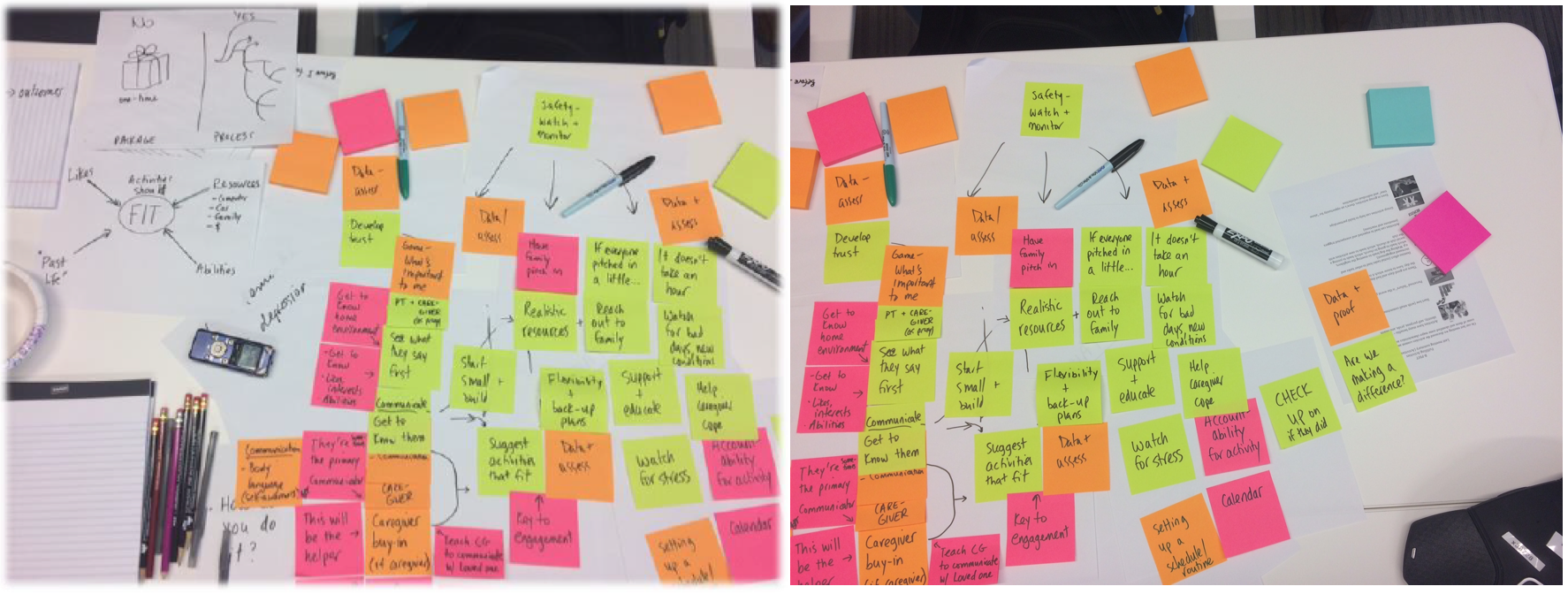Phase 1
Identifying factors of engagement, main interests, and circumstances surrounding usual activities to help us identify potential outcomes and design conceptual models.
The first order of business when embarking on this project was to get accustomed to the problem space. This involved exhaustive literature review conducted to get an idea of preliminary work already being done in the field. The outcome from the literature review then informed the way we approached the problem and helped us empathize with the problem that we were facing. A brief snapshot of the results of the literature review is presented below.
Semi-structured group interviews
A series of interviews were conducted with geriatric professionals from Eskenazi Health and volunteers from Joy's House (adult daycare facility). 3 set of interviews were conducted with group of professionals from their respective institutions. Interviews were successive and were informed by the progress made in the preceding interview. Each interview session focused on a certain topic
- Session 1: Content - Existing activities that the intended user performs for a more fulfilling life and other proposed activities that could potentially expand their arsenal of fulfilling things to do.
- Session 2: Delivery – Given the limitations and restrictions that accompany the old age population, how do caregivers go about delivering content into successful activities? Other delivery that they would wish to try.
- Session 3: Outcome – Sharing experiences and gathering information on the success or the failure of various activities.
In session themes saved on sticky notes during session 2.
Ideation, brainstorming, and revision of themes from session 1 and 2 to inform the probe points for session 3.
Data Analysis
All of the interviews and observations were transcribed. We ran qualitative analysis on the transcripts using codes and tags to achieve actionable results. A sample of the codebook in progress is shown below.
Results
The results, achieved from the data analysis were multifaceted. In addition to getting a list of activities co-related to ideas, we also got insights into how to best deliver those ideas and what outcomes to best expect out of them.
Phase 2
Based on the results of phase 1, we went about trying to design a product that would allow end users to consume and engage in fulfilling activities in a meaningful way. It started out with ideation of sketches and storyboards that best represented our solution.
Participatory Design and Testing
We then realized the sketches and storyboards in prototyped products and tested them out with our end users. Additionally, we also conducted participatory design sessions in order to make a more user friendly product.













